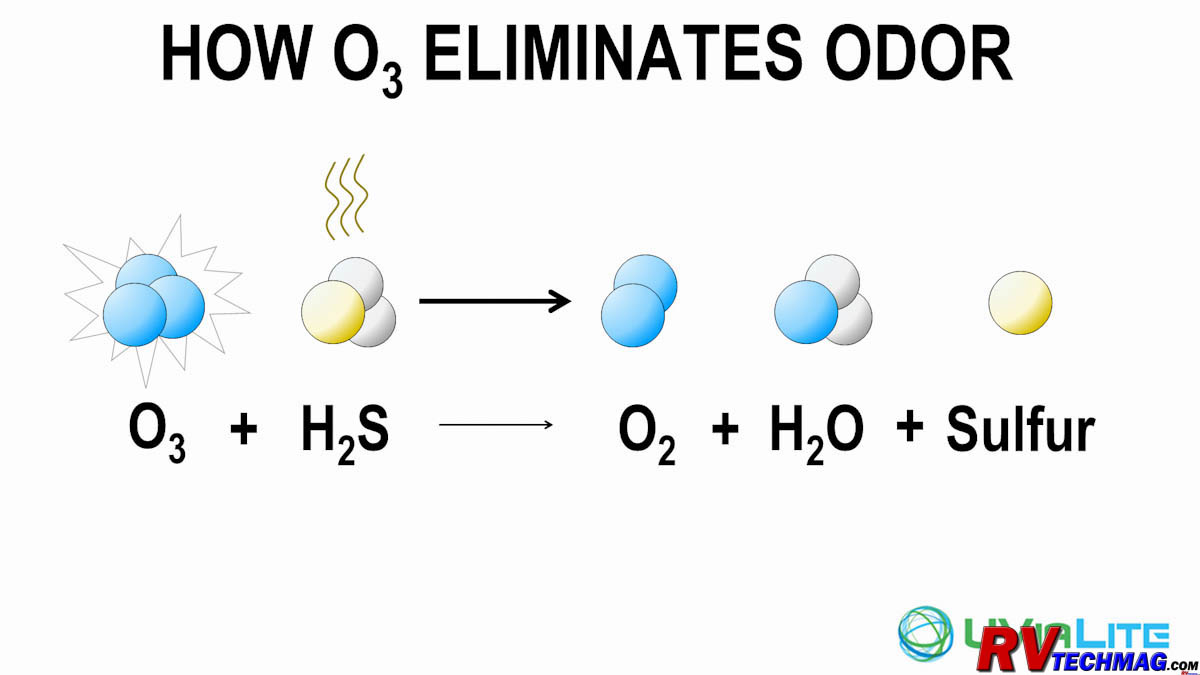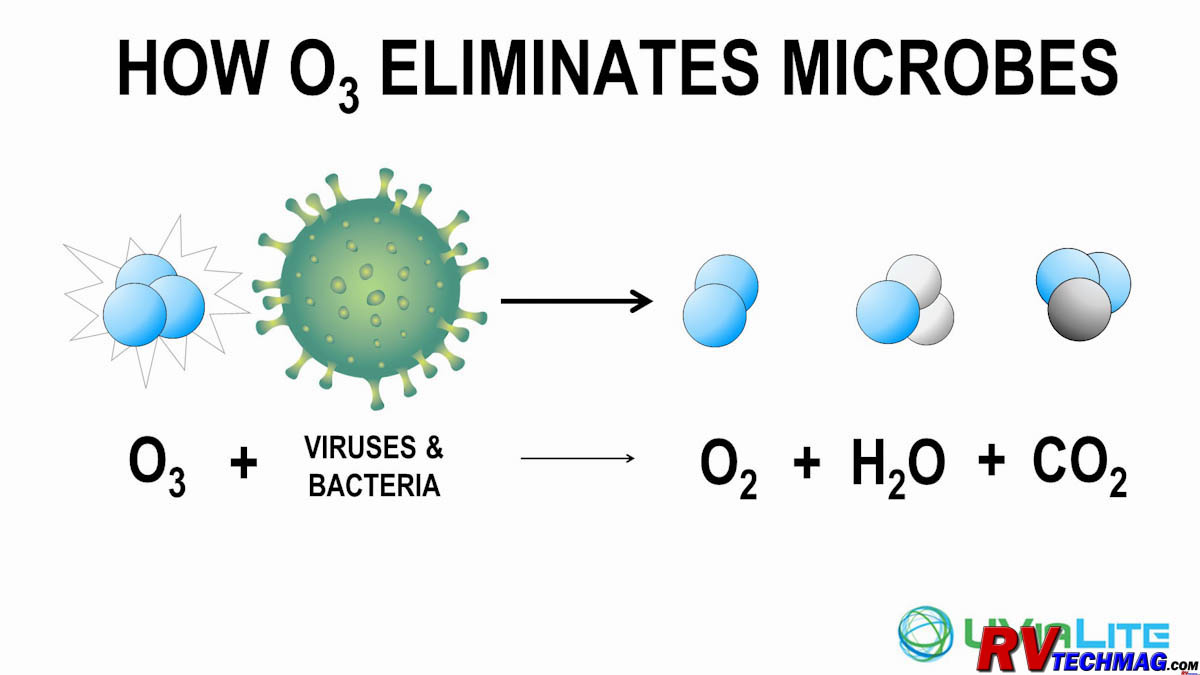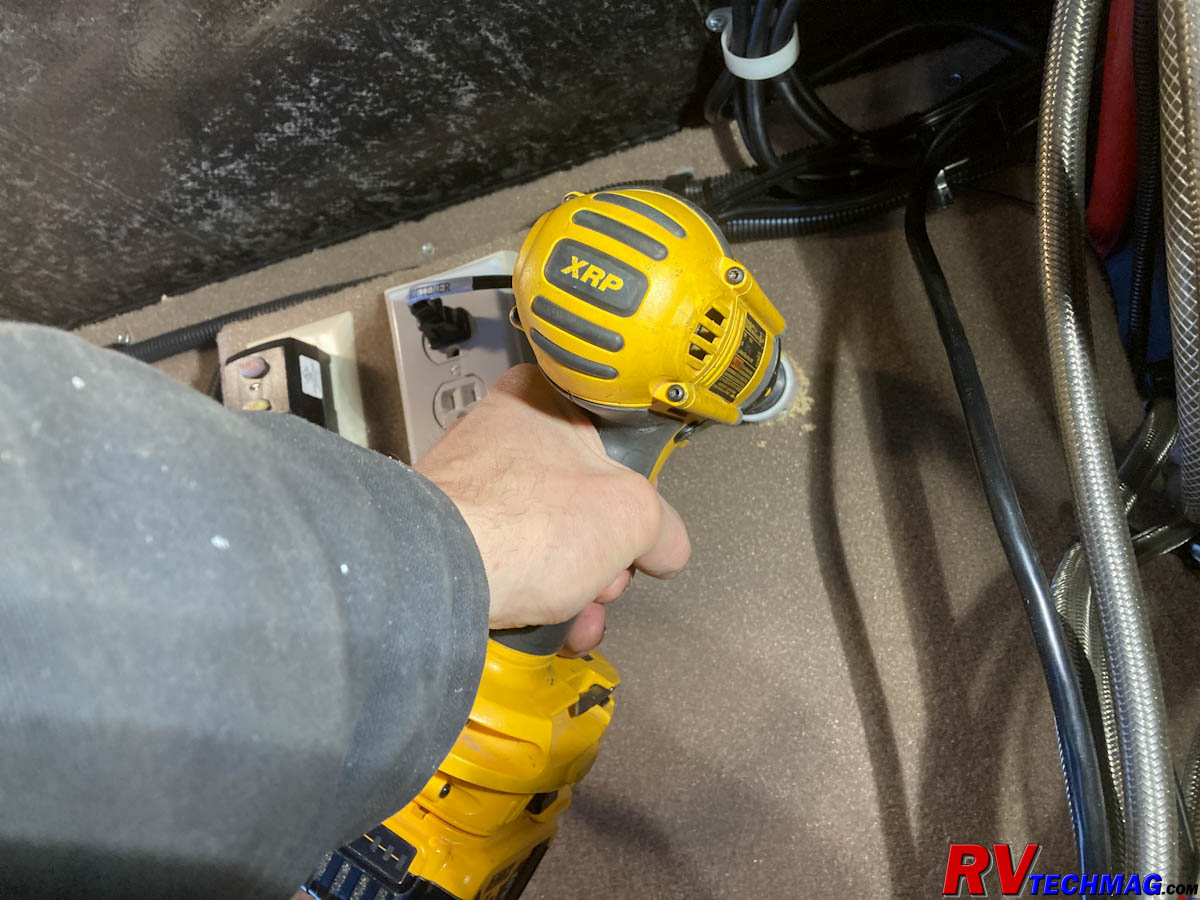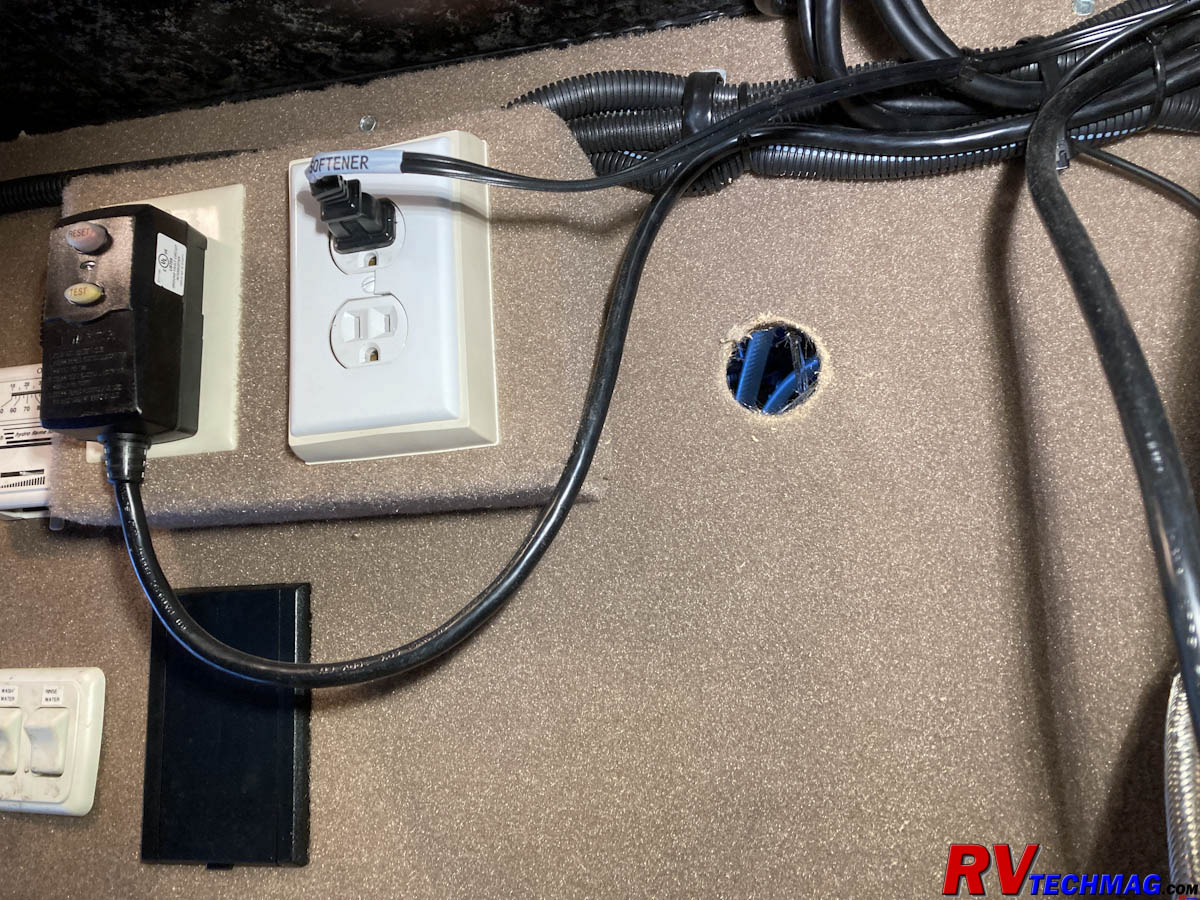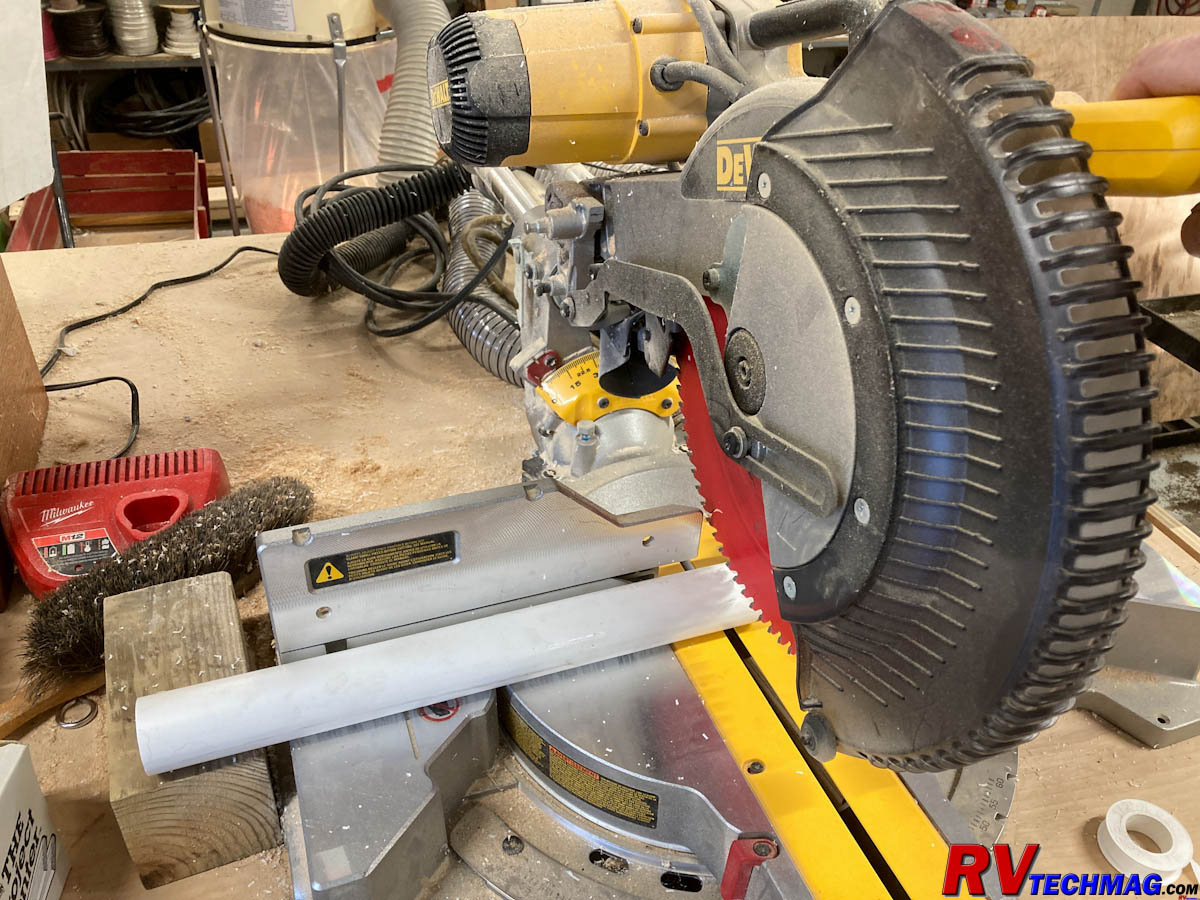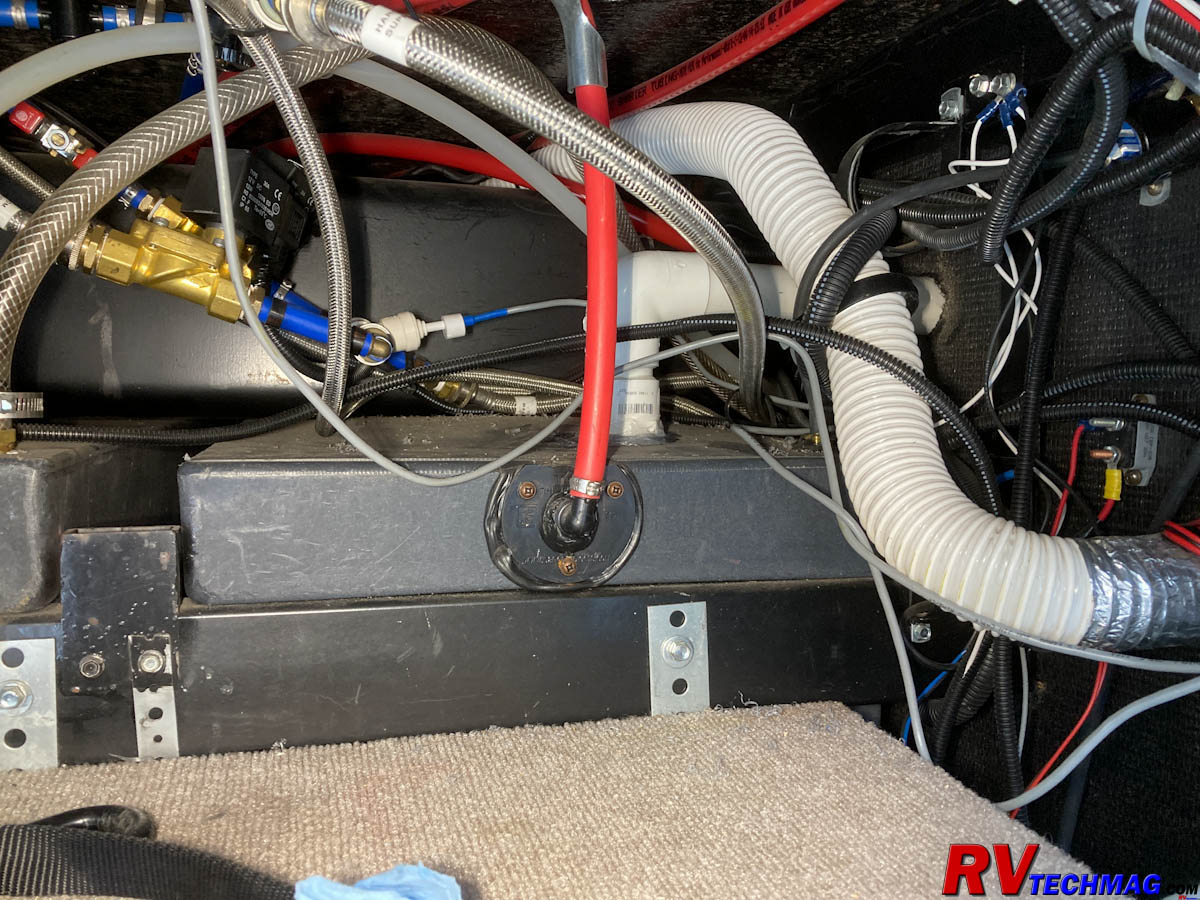UviaLite Air Purification System
Eliminating odors and bad bacteria from your RV's holding tank
Article Date: Aug, 2022
Article and Photography by Mark Quasius
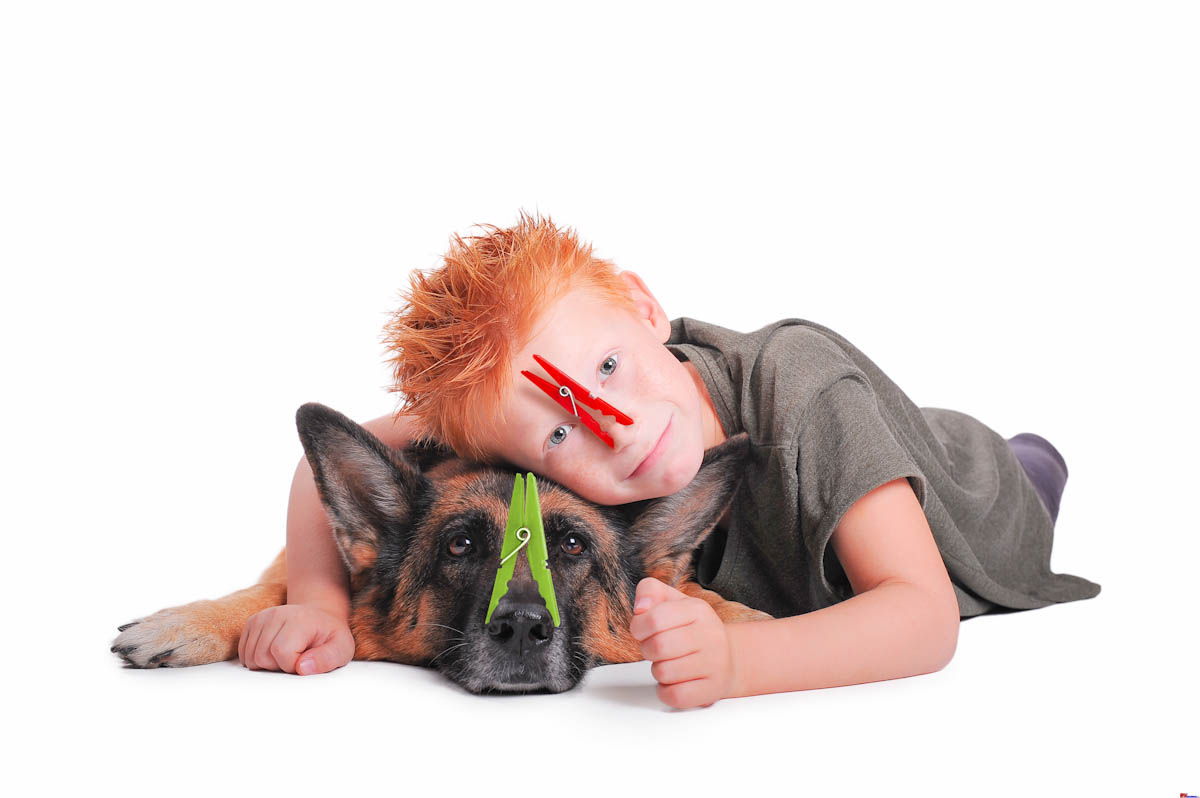
A black water holding tank is undoubtedly the least glamorous item in any RV. But, it is a necessity unless
you plan on using campground bathrooms exclusively. The waste that accumulates there has a horrible smell and the bacteria that is
ever present can cause sickness so it does need to be handled with care. The odors that emanate from the tank can waft into the RV's
interior whenever the gate valve on the toilet is open during a flush cycle. In addition the holding tanks are also vented so while
you're enjoying your outside patio area, a sudden change in wind direction can result in a not so pleasant aroma drifting across
your picnic table when dining.
A black holding tank is designed to hold the contents that are flushed from the toilet. All other sources,
such as showers and sinks are directed to the gray water tank. The black tank is limited to human solid waste and toilet paper, but
not just any toilet paper. The TP must be able to dissolve quickly in the tank to prevent clogging. You don't have to buy RV specific
toilet paper but most brands that are approved for septic systems will work. The way to test this is to fill a Mason jar 3/4 full with
water, stuff a few sheets of paper into the jar, close the lid and shake. If the paper is safe for your RV it will dissolve into a bunch
of fluff. If it remains intact do not use it in your RV.
Many RV owners use a chemical in their black holding tank to treat the contents. These chemical are advertised
as helping to keep the tank clean and dissolve solids. But in reality, this doesn't really
work. Under normal conditions both human waste
and toilet paper will dissolve in water without any chemical assistance. Most holding tank treatments use
enzyme based chemicals to treat
odors by masking them rather than eliminating them. These enzymes supposedly help to dissolve human waste but the problem with enzymes is
that they need time to grow before they can accomplish this - typically 4 to 5 days. Most RV owners dump their holding tanks more frequently
so the enzymes don't ever get a change to do their thing. Actually, dumping with water and following up with a good flush will keep your
tank clean and prevent the sensors from fouling.
UviaLite and Ozone
But this still doesn't eliminate odors from accumulating in the tank during use. While doing a recent road test and
review on an American Coach diesel pusher I ran across a new system that was used on their coaches. This system is called UviaLite.
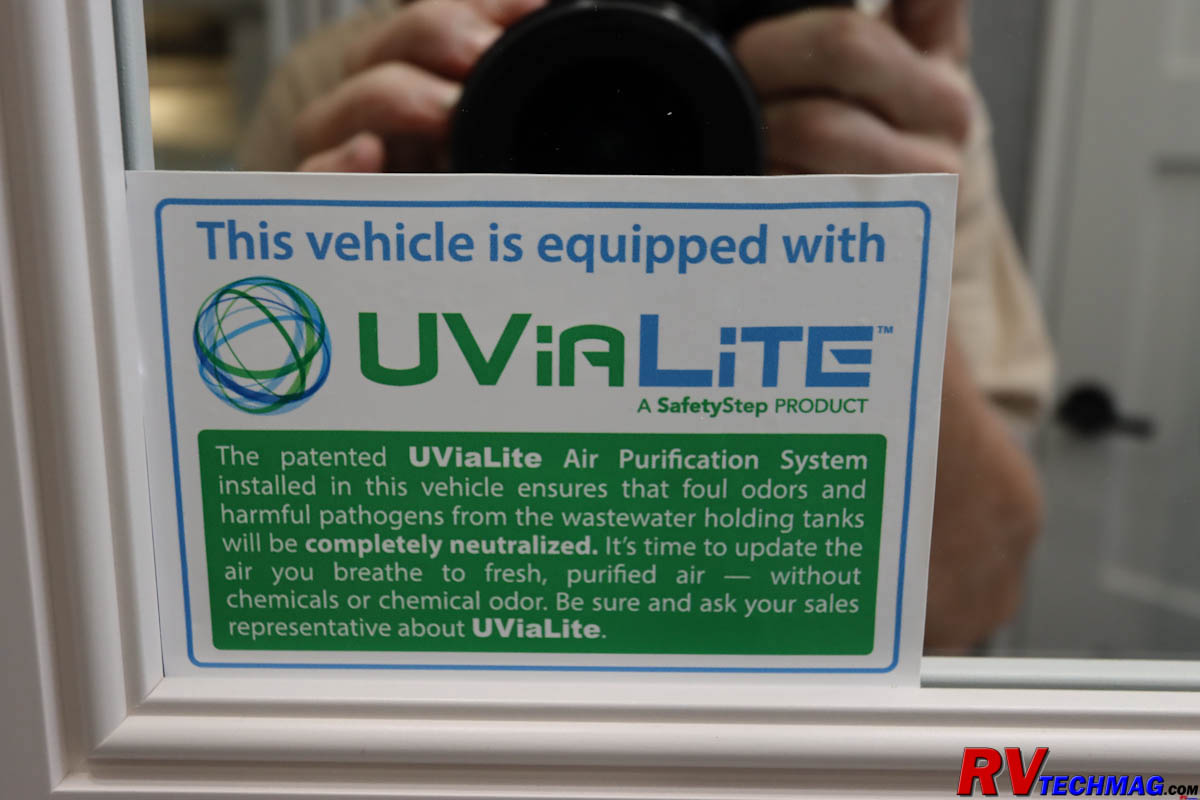
UviaLite is a new development for RVs but the concept has been around for quite a while in other industries. UviaLite
creates ozone that actually kills the odors in the tank, rather than masking them with a perfumed scent. Ozone is created inside the UviaLite
module and passed through into the top of the black tank.
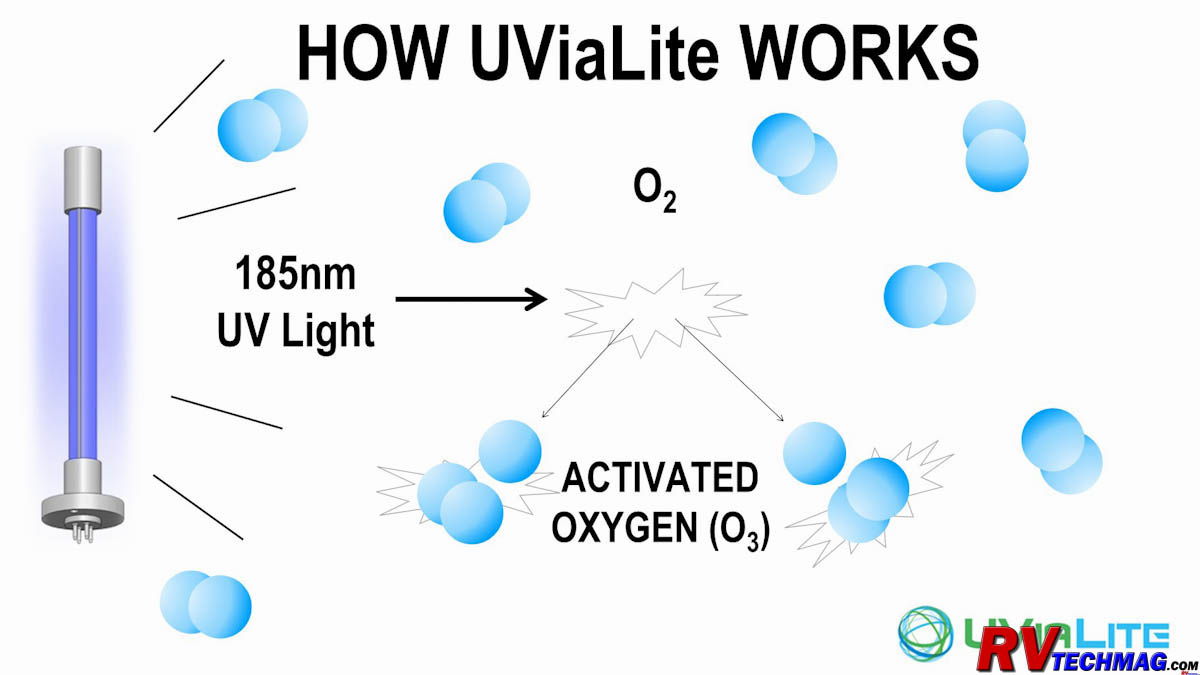
UviaLite uses an ultraviolet light that is tuned to a specific wavelength of 185 nanometers. This light converts the
Oxygen
atoms into Ozone atoms. Fresh air from beneath the coach passes into the UviaLite module, where it is converted to ozone. The ozone then is delivered
to the top of the black tank at less than 1 CFM via the natural chimney effect of the tank's vent stack. The UviaLite has no fans or moving parts to
maintain and the only possible expense would to replace the UV bulb. The unit only uses about 10 watts of 12 volt power to operate.
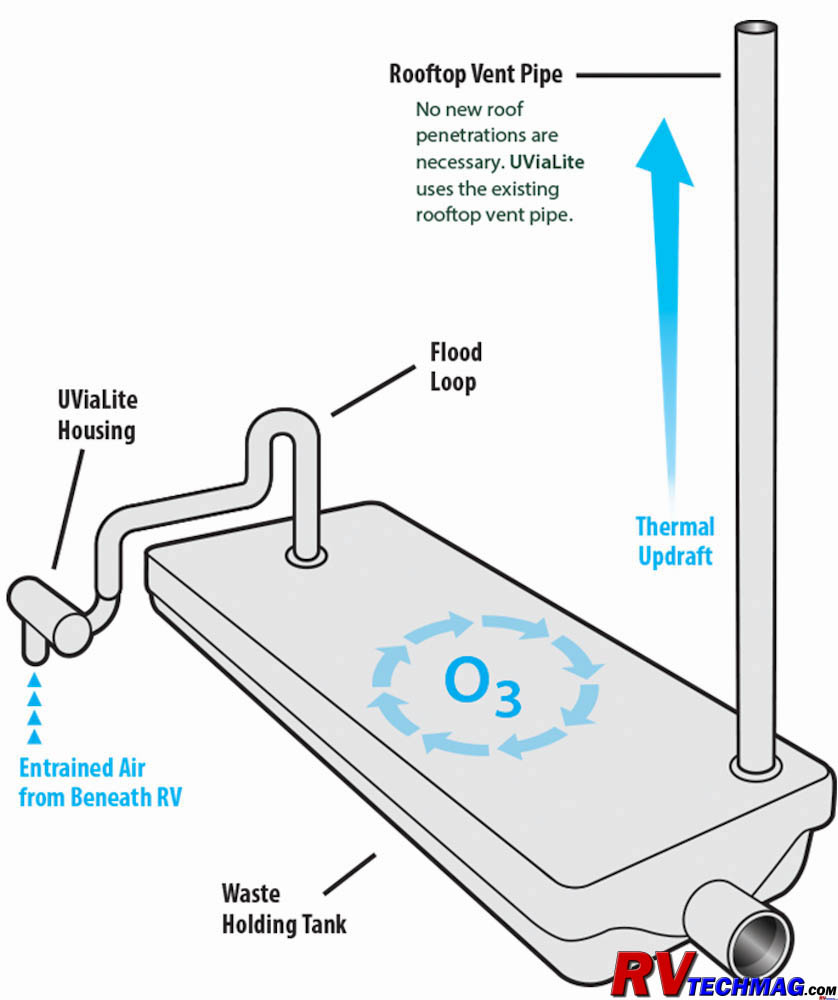
Ozone is a powerful oxidizer that can kill bacteria and destroy viruses in seconds. The ozone remains in the air above the
fluid level within the tank so it has no effect upon any beneficial enzymes or probiotic chemicals that are in the tank's water. However, the ozone
will neutralize any perfumed scent in the air that was created by the chemicals. It will convert the stinky hydrogen disulphide odors in the air to
water and sulphur, which will harmlessly drop into the liquid portion of the tank, thus killing any odors. If you do happen to smell anything it
would be like the fresh smell after a rain, where ozone is created by lightning.
Ozone also attacks microbes and pathogens in a similar manner. The ozone converts them to O2 Oxygen,
H2O Water and CO2 Carbon Dioxide. UviaLite can prevent mold, viruses and pathogens from wafting into the RV, which prevents
sickness from passing from one person to another who shared the same toilet.
Based upon what I learned about UviaLite I decided to put it into our Entegra Coach and put it to the test.
The Installation
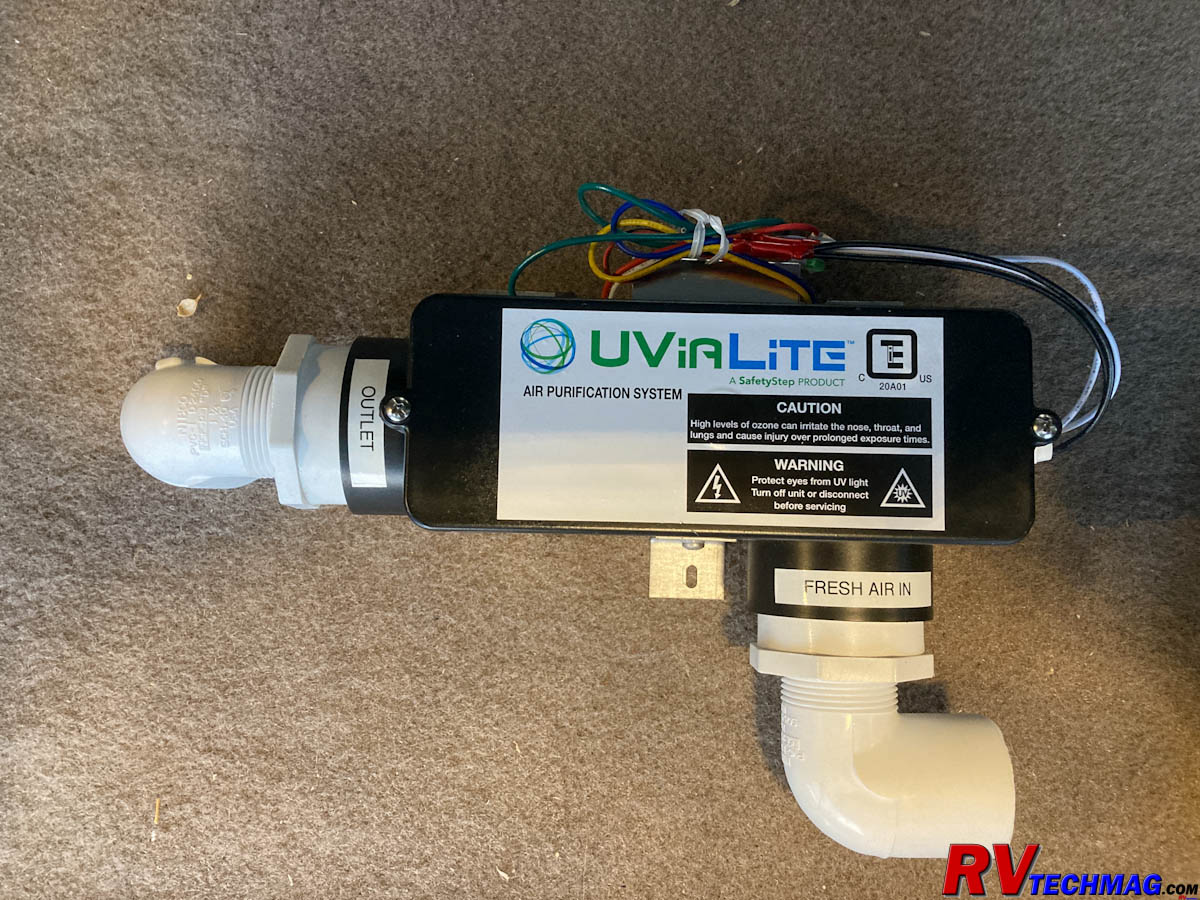
The UviaLite system isn't very complicated. In a nutshell, you just mount the unit in your RV's basement, connect it to a
12 volt DC power source and run some PVC pipe to the unit. The basic unit is marked with an inlet port and outlet port for 1-1/4" PVC Pipe, which is
available at any home improvement store. A pair of wires connects the unit to a 12 volt hot power source while a pair of wires attached to a green
LED indicate when the unit is on and the UV bulb is intact.
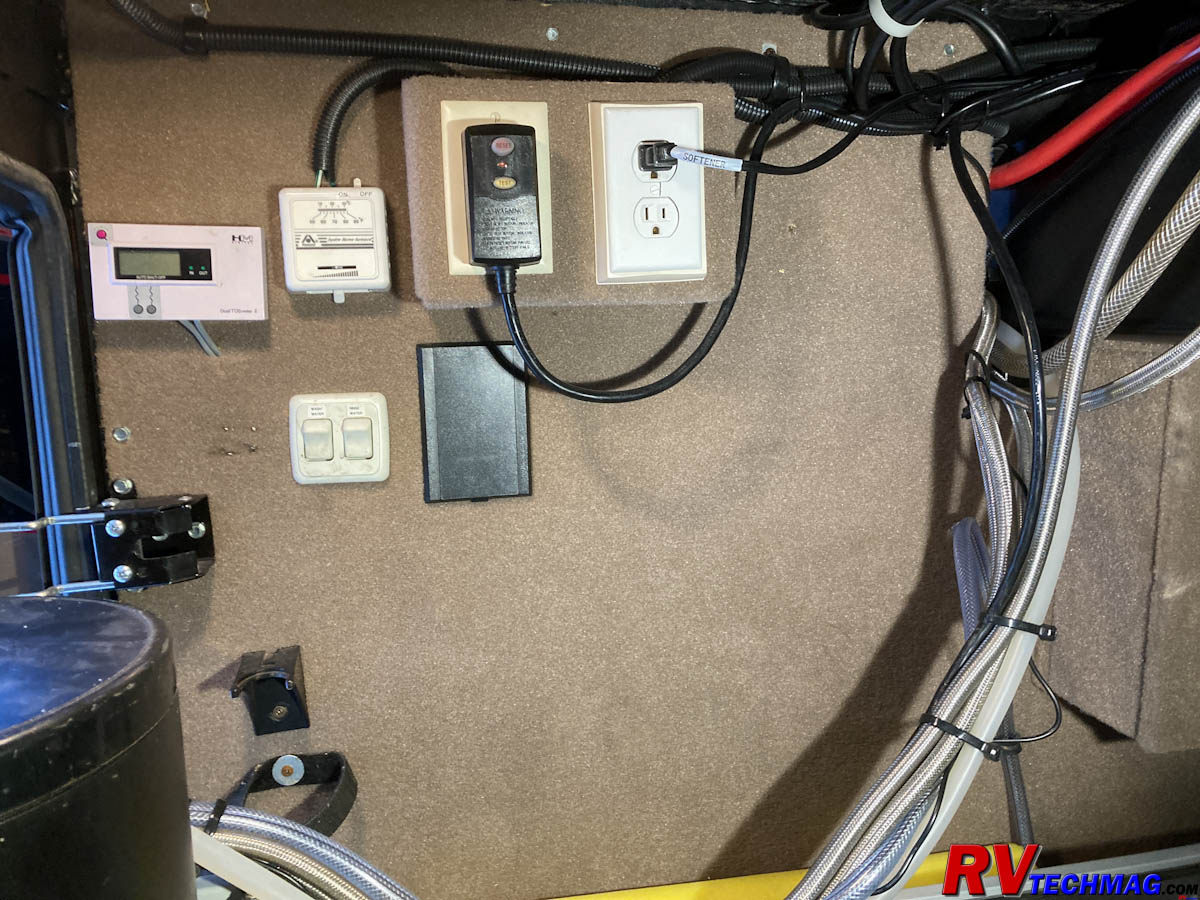
The unit can be mounted either horizontally or vertically so that it can be used in almost any location. I chose a blank
area on my basement wall in a compartment that was next to the holding tanks. In my case I mounted it vertically so that it was easiest to connect
the inlet and outlet plumbing.
The next step as to drill a hole in the wall to pass the outlet pipe into the next compartment where the holding tanks were. I
used a 1-3/4" hole saw and then drilled a second hole in the basement floor so that the inlet pipe would extend beneath the coach and bring in fresh air.
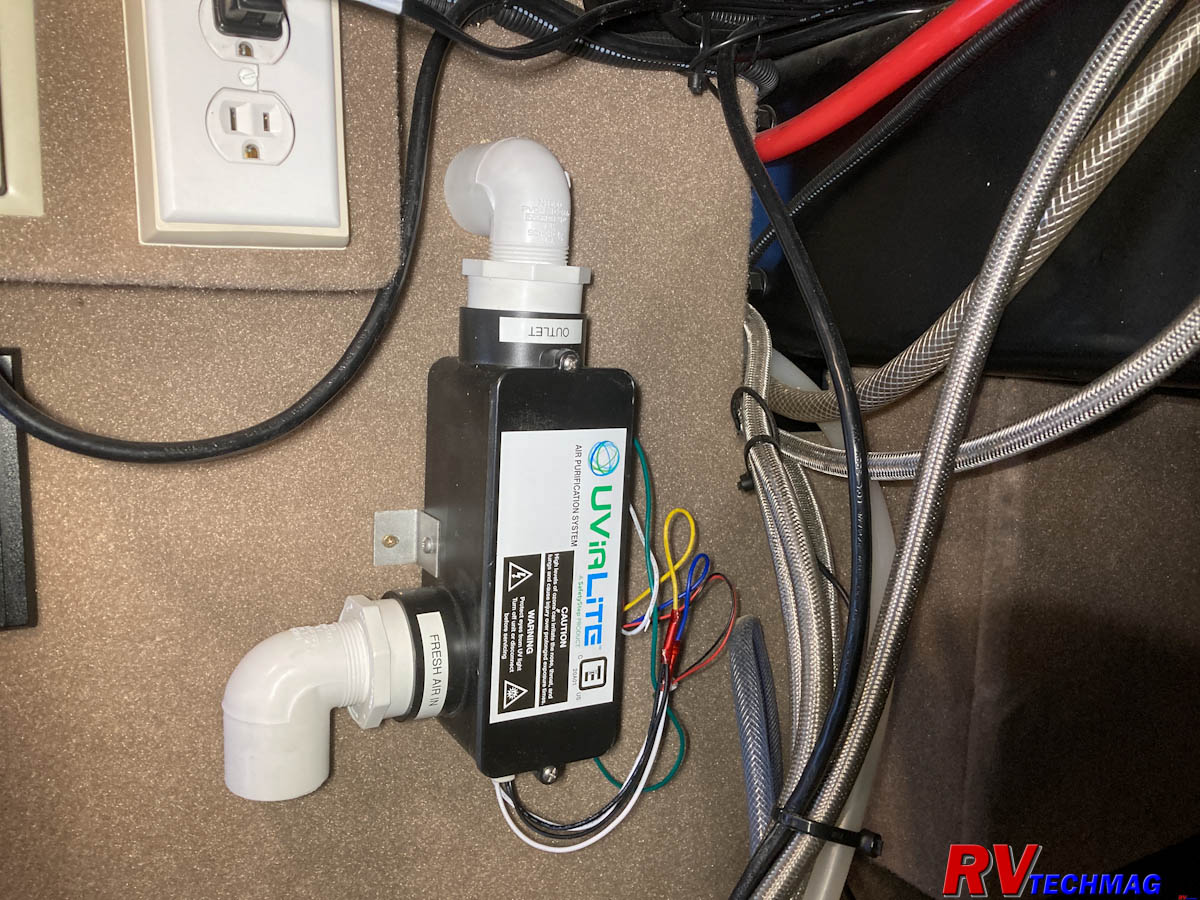
I then aligned the UviaLite module's outlet elbow to the hole and fastened it to the wall. The UviaLite can be left
running 24/7 and
the only time you would probably want to remove power from the unit is if you put your coach into winter storage. Seeing as how I live in Wisconsin, the coach does
get winterized over the winter months so I decided to mount a rocker switch in the wall to allow me to switch off the unit during winter storage.
I then used my miter saw to cut some 1-1/4" PVC piping so that I could connect the UviaLite to my holding tank. Normally holding tanks
use spin-weld fittings but seeing as how this was at the top of the tank I simply drilled a hole in the top of the tank, used a PVC-to-ABS cement and glued in
a threaded PVC adaptor. I also added a bit of sealant around the joint, just in case. I then fitted a length of PVC pipe and an elbow to connect to the UviaLite
module's outlet port.
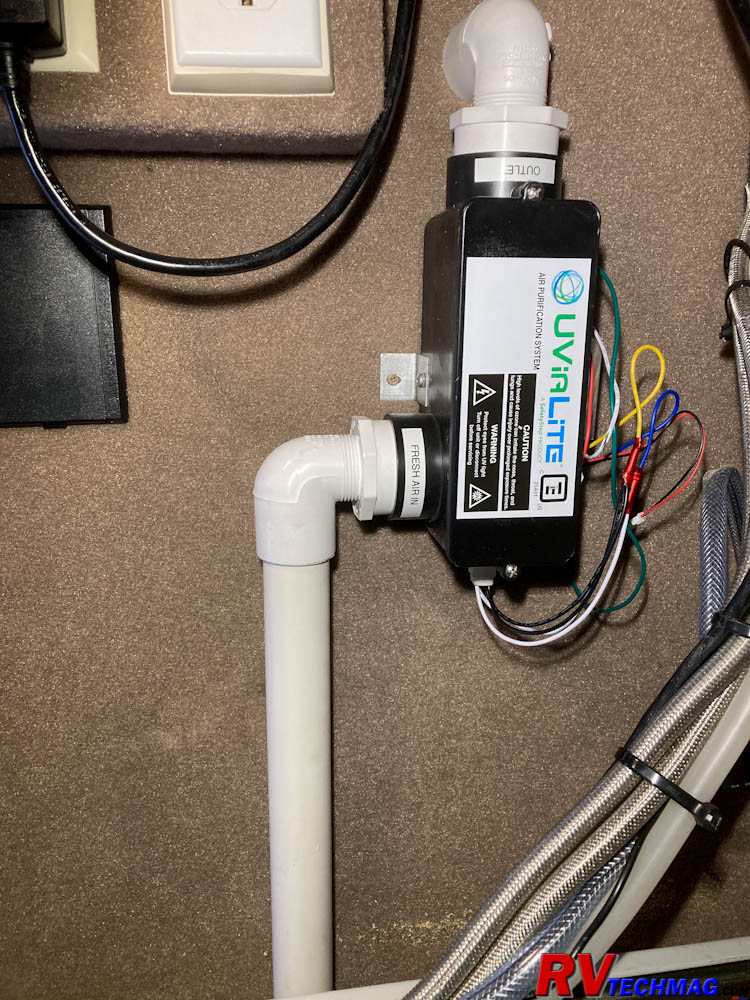
The last step was to cut another PVC pipe to bring in fresh inlet air. Once all of the pipes were fit I glued them up with
PVC cement and switched on the power.
Summary
The results were as expected. No odors were present in the coach under any circumstances. I haven't had any maintenance, although I'll probably
have to replace the UV bulb in a couple of years. We haven't had to use any chemical in our black holding tank and just use the black tank flush attachment every now
and then to ensure that the tank bottom keeps clean. I definitely give the UviaLite system two thumbs up.
Source
UviaLite
(540) 362-9636
www.uvialite.com
Return to Home Page
If you enjoyed this article be sure to recommend RVtechMag.com to your friends, like us on Facebook or Twitter
or subscribe to our RSS feed.



|






